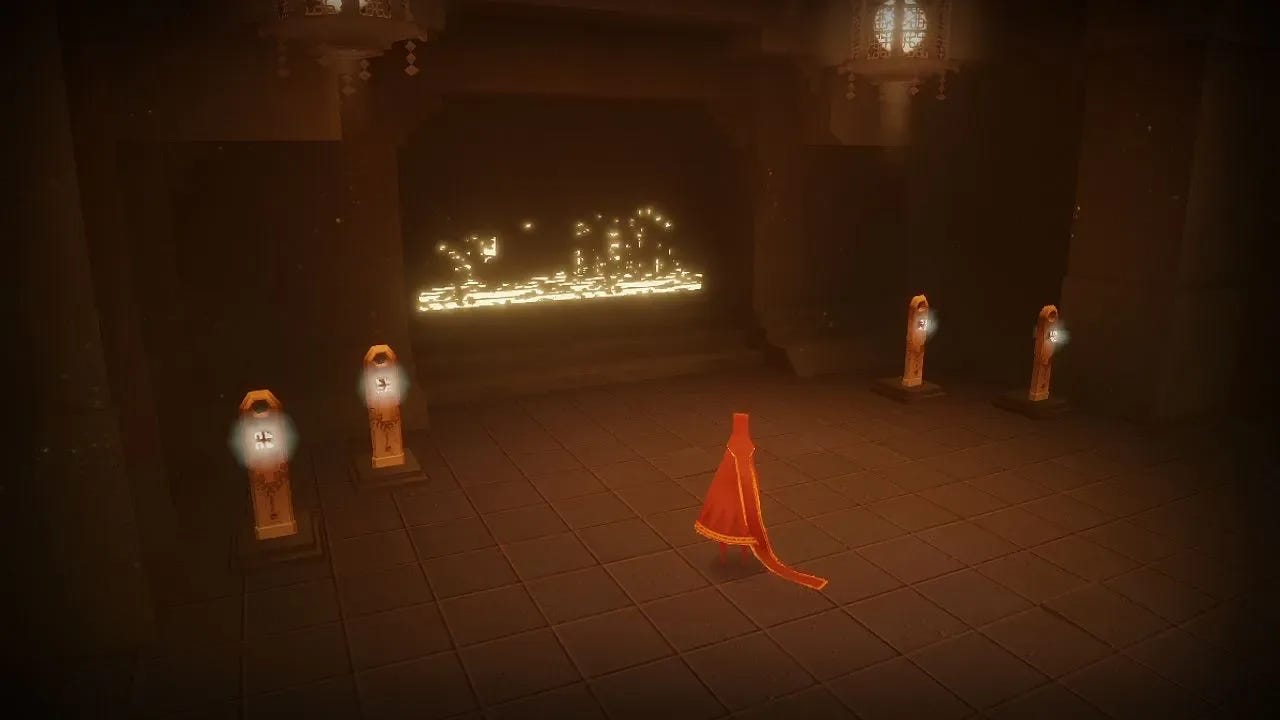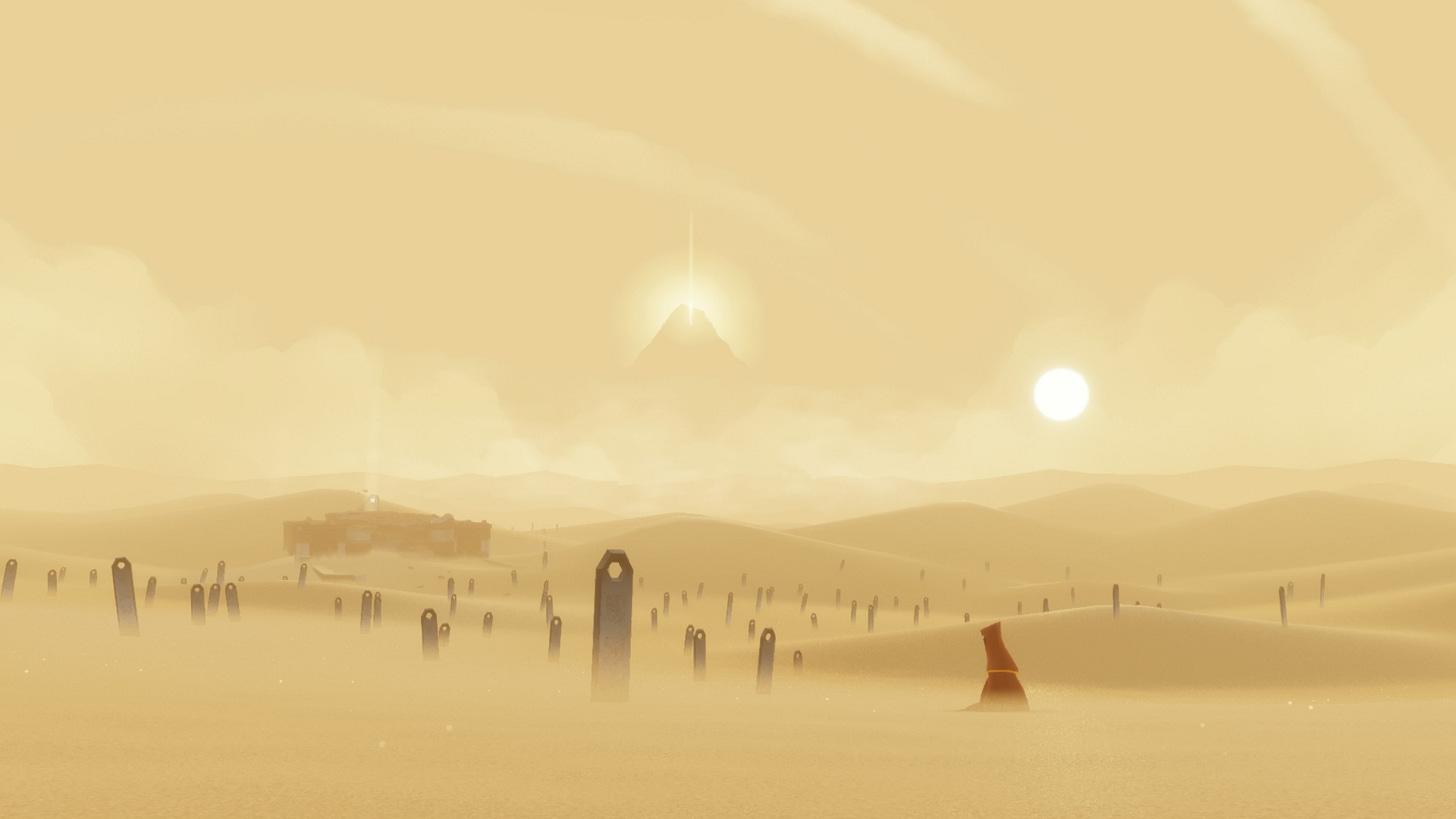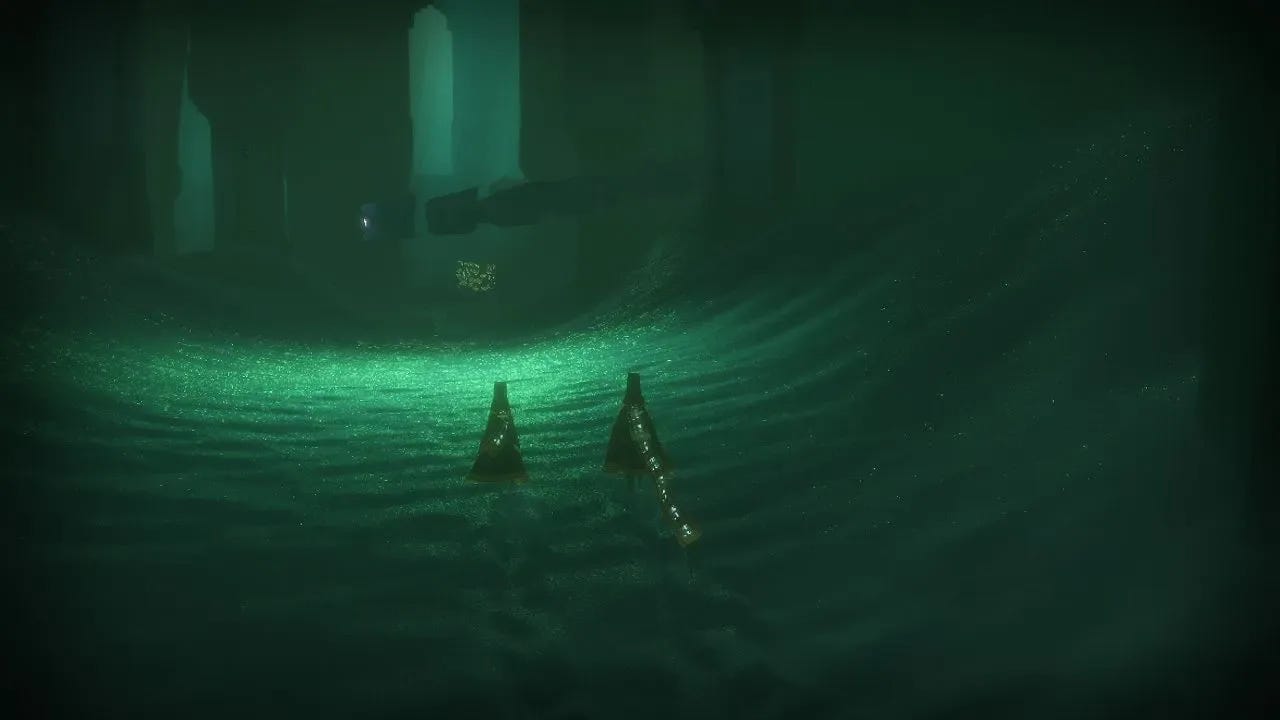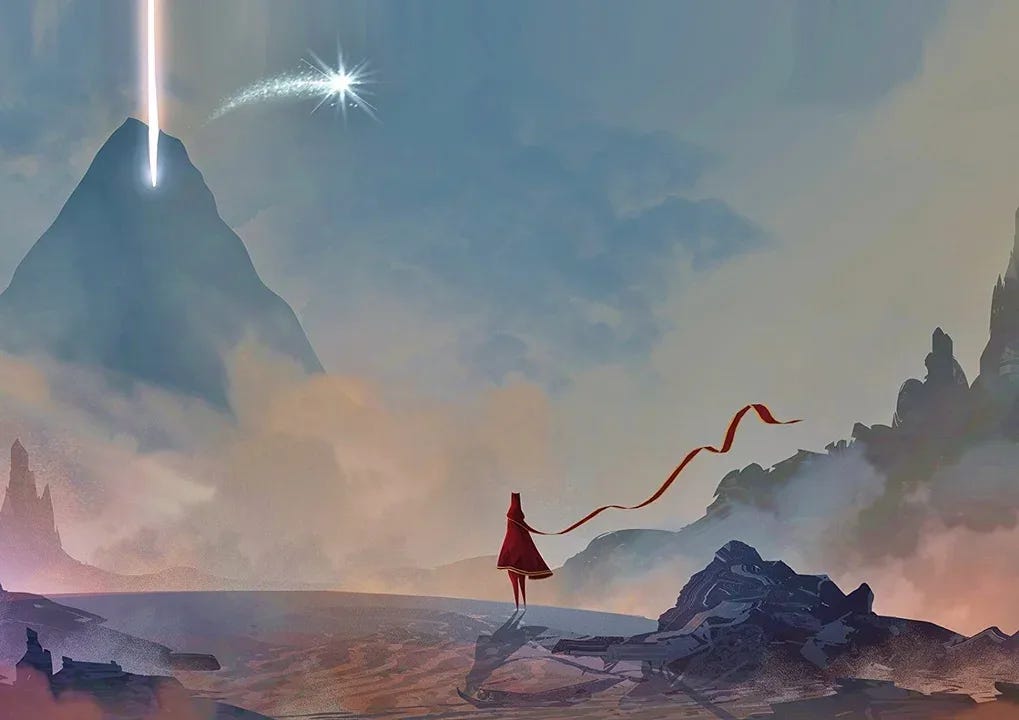The four-year defending champ, Ori and the Will of the Wisps, has been dethroned. There’s a new favorite game in town. If you somehow haven’t played it, stop reading this and come back after you’re done. You can only see it and feel it for the first time once.
I’ve never needed a game more than I needed Journey at the end of this past summer. It might be a New Year’s game first and foremost, but in the last week of September, I felt myself magnetically pulled to it. I’ve owned my copy for almost four years and probably played it a dozen or so times myself, while watching it another handful of times beside the people closest to me. My most recent sojourn through the story was in January alongside my dearest friend (which you can read her account of here,) but this particular night was one I had to face myself. The only way forward was through.
What I did more on this trip up the looming desert mountain than any other is I wept. I wept for the moment after the title card blazed with the merciless noonday sun, when the traveler steps past what you come to learn are grave markers. Nameless travelers from generations past who couldn’t make it more than a few steps without their bodies giving out. And I wept because I understood.
Luminary cellist Tina Guo pulled her bow across the strings to signify that the soul of the traveler still lingers here. Millions of players have walked or glided over this first sand dune in eager pursuit of everything that lies ahead, but I paid my respects with tears in my eyes and my hands off the controller. When you leave the controller idle for long enough, the traveler kneels down softly in the sand and bows their head. I gave those fallen from ages past my solemn, silent prayer.
Another thing that made this voyage stand out was that I only had one encounter with another player. Every time I play through this game I am amazed that even twelve years after its launch, as a single-player indie game, I’ve never had a full run conclude without befriending someone in the desert. But to see only one was out of the ordinary. We surfed together through “Road of Trials,” the downhill windswept wasteland, losing sight of each other occasionally as we weaved between weathered stone arches, and then reunited to brave the underground tunnels ruled by floating monsters.
Knowing what it’s like to meet as many as six people along the path made this one more intimate and personal than I was expecting. In the most chaotic, rapidly paced chapter of the game, there was someone who kept me grounded. But when it came time to climb the prophetic tower before the foot of the mountain, we did not see each other again. It’s often a little sad to part ways with another traveler, but I’ve come to learn that there are some mountains we have to climb alone.
And then there was “Apotheosis.” Watching the traveler succumb to the frost in the icy storm at the mountain’s foot is always heartbreaking, but I found myself overwhelmed by emotion as the golden light emanating from above the clouds saturated the sky. Possibly my favorite musical moment in all of gaming is what leads up to the final approach to the peak, in measures 5-8 of section 5. The main theme has always been in B minor, but in this moment of sheer defiance, the leading synth casts a C major chord over the horizon. All the while, the first violin reaches for its highest B, illustrating the figurative and literal climb for the summit. C does not naturally occur in the B minor scale, but the traveler pushes back against the circumstances and does everything they can to rise above.
Walking into the light as Guo ascended from bass to alto to treble clef in her final solo made me realize something. The age-old saying that people often roll their eyes at tells us “in the end everything will be okay,” but there’s an added stipulation I learned from Journey. If everything isn’t okay— if the winds are howling and whipping the snow more fiercely than you can stand, the bitter cold becoming insurmountable, and the weight of it all too much to carry— it isn’t the end. There’s still plenty of mountain to climb. With any hope, there’ll be someone there alongside you. But even when the air is rendered opaque by snow and no signs will make themselves known, the only way through is forward.
Journey might have become the cornerstone to a genre of games, but twelve years later, there truly is still nothing like it. Austin Wintory’s sonic interpretation of the human spirit is awe-inspiring in every imaginable sense. The cello solo that opens “Nascence” is two millennia of love, loss, triumph, heartbreak, yearning, and sacrifice spoken in a language that transcends words. It's a call to destiny ringing out from beyond the highest peaks as the traveler sets their sights on the sparkling comet streaking across the arid sky. And with a massive expanse of shimmering sand in between, it’s up to you to discover what you were born for.
Someone wise once said that Journey is a game about you. May you soon find out why.
All in-game captures are either my screenshots or were provided from the Journey press kit. This final piece, titled “Live Forever,” was also in the press kit and can be found in this online collection with some of the artist’s other works. Thank you very much for reading. My review of Neva is next. Please stay strong and take care of yourself.





You paint a beautiful portrait with your words that are filled with exquisite imagery and heartfelt emotion.